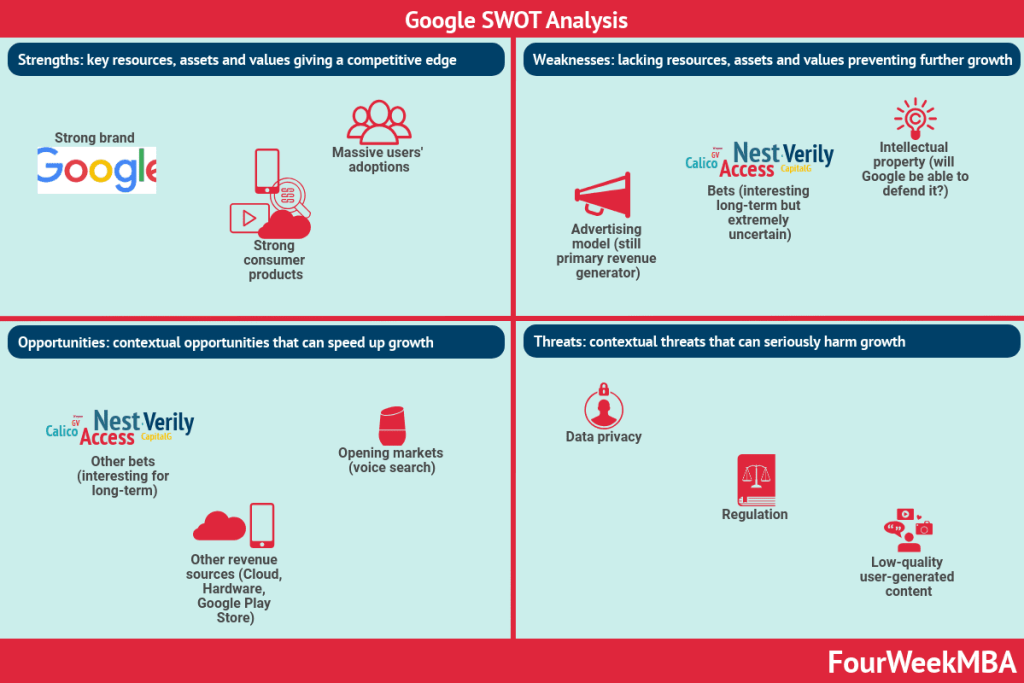Netflix is among the most popular streaming platforms, with a subscription-based business model. The brand, platform, and content are strengths. The volatility of content licensing and production are weaknesses. The streaming market is a potential blue ocean. The inability to attract and retain premium members and its fixed long-term costs are threats to its business model.
Strengths

- Brand: Netflix has become one of the stranger consumers brands of our times, and one of the digital business models, who reached the status of a tech giant. This is a crucial ingredient for Netflix’s success, as Hollywood moved to Silicon Valley.
- Platform: The content on the platform, combined with Netflix algorithms for content recommendation makes it among the stickiest tech platforms, where members spend hours binge-watching.
- Content: Netflix’s selection and production of content also make it among the platforms with a wide variety. The content is both licensed and produced by Netflix.
Read more: Binge-Watching And The Netflix Effect
Weaknesses

Content licensing:
Netflix runs a subscription-based business model where, in the past, content got licensed to make it available on the platform. The licensing agreement makes Netflix pay in advance for content that will be available on the platform for the millions of premium members to watch. This means that Netflix has to make sure to have at each time a wide variety of content to make its value proposition compelling for the premium members. This also results in a cash-flow negative financial model, where the company has to anticipate content licensing fees to make the platform running in the first place.
Content production
For a few years, Netflix also started to invest in producing its own content. While in the long-term this will make Netflix business model less reliant on licensed content, in the short-term (3-5 years) it still poses substantial strains on the company’s liquidity and ability to expand.
Read more: Is Netflix Profitable?
Opportunities
- Blue ocean: the streaming market is still in its infancy, and the next wave might open up to new formats, and therefore larger and less competitive markets, for those able to grab them. Netflix is well-positioned for that.
Threats
- Inability to attract and retain members: if Netflix will not effectively attract new users. And retained existing premium members, the negative cash-flow platform might incur substantial losses and shrink its business.
- Piracy-based video offerings: piracy services, even though illegal, still represent a big threat as it becomes hard to track and keep up with them. This poses a serious threat to the overall Netflix business model.
- Fixed cost of content commitments: as already highlighted, content licensing is key to the Netflix business model, yet it also represents a weakness. In the long-term, that also represents a threat- That’s because Netflix has to enter multi-year commitments with content providers, part of which are noncancelable. So if part of that content will end up unused on the platform, Netflix will still pay for it.
Key Highlights:
Strengths:
- Pioneered binge-watching culture and TV series release strategy.
- Strong consumer brand in the digital business landscape.
- Sticky platform with engaging content and effective recommendation algorithms.
Weaknesses:
- Negative cash flow due to content development and licensing costs.
- Reliance on content licensing and production strains liquidity.
- Cash-flow negative model anticipates content licensing fees.
Opportunities:
- Emerging blue ocean in the streaming market for innovative formats.
- Potential to diversify and reduce reliance on licensed content.
Threats:
- Risk of failing to attract and retain premium members, leading to losses.
- Persistent threat from piracy-based video offerings.
- Fixed costs from content commitments pose a long-term financial threat.
Read next: Netflix Business Model, Netflix Profitability, SWOT Analysis, Amazon SWOT Analysis
More on Netflix Business Model










Netflix Yearly Average Revenue

Netflix Average Monthly Revenue Breakdown


Netflix Subscribers Per Region


Read Also: Netflix Business Model, Netflix Content Strategy, Netflix SWOT Analysis, Coopetition, Is Netflix Profitable.
SWOT Analysis Case Studies


















Read Next: SWOT Analysis, Personal SWOT Analysis.









